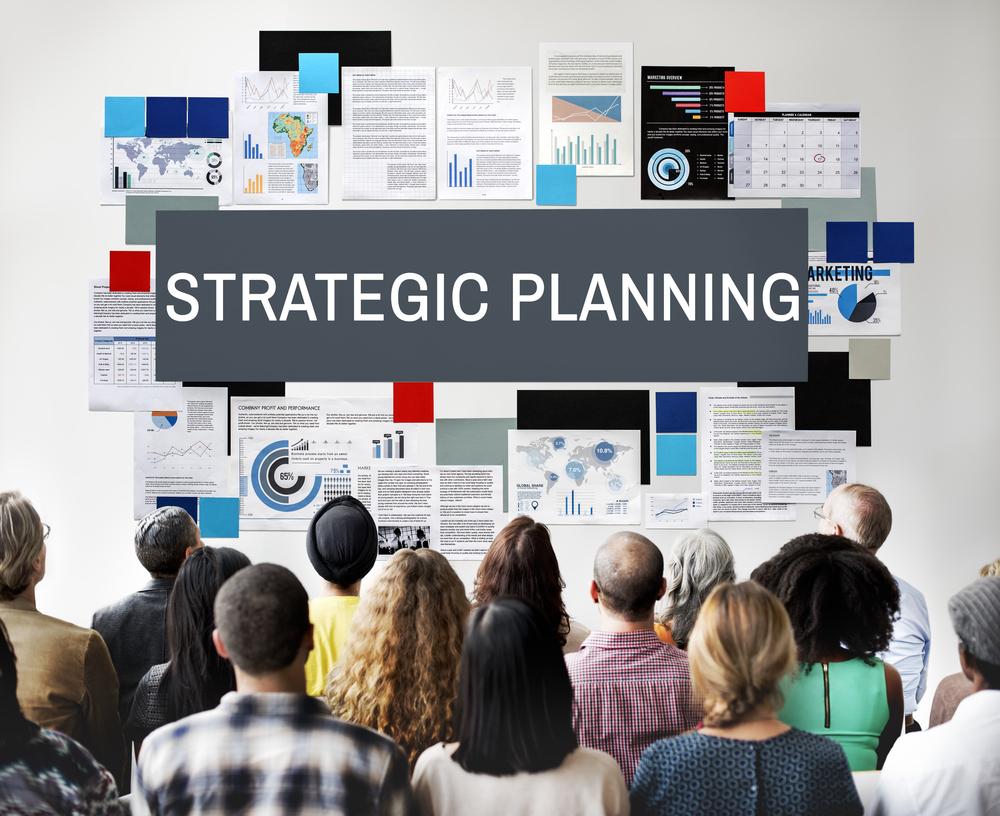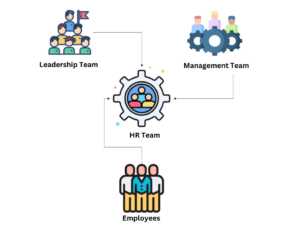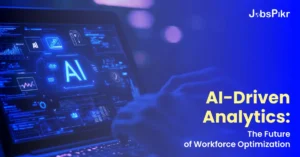Strategic Workforce Planning is the process of analyzing and understanding the current workforce and planning for future requirements. Without a plan in place that takes into account global job market data along with internal data streams, growing businesses will run into a wall quickly. It also takes into account the skillsets and the job roles that will have to be added to the company’s deck shortly to achieve its goals, objectives, and aspirations. Strategic workforce planning may involve upgrading and upskilling existing employees along with hiring new ones.
The HR team is usually tasked with this work and they start with analyzing the labor market trends, recruitment data, workforce metrics along with demographic data. Collaboration with other teams to understand their growth plans and needs for the near and distant future is also needed to come up with near-precise predictions. The goal of strategic workforce planning is to ensure that external factors like a pandemic, shortage of skilled workers, change in government policies, and other unpredictable events do not end up as roadblocks in the path of a business.
There are certain goals that a company aims to meet through strategic workforce planning tools. The major ones are:
- Cost Optimizations– Unless you plan, there are chances that you may end up with sudden manpower requirements in which case you may have to go over your budget to get someone quickly. Cost optimizations may also involve internal changes such as moving an existing employee to a senior role to take on new responsibilities instead of hiring from the outside.
- Shaping Competencies– Companies that hire too fast end up having to offload employees when the economy goes south. Articles like this one by HRBrew explain how unplanned quick hiring during the pandemic resulted in mass layoffs once it blew over.
- Planning team size– Understanding how efficiently the current team is performing and how it is expected to grow over the next 12 months is vital. This can be done by analyzing teams across departments, projects, or locations.
Fig: Predicting Outcomes- Using data as the magic sauce
- Agility and Flexibility– If you have all the data with you, you would have worked on multiple directions that the company’s workforce may take. Hence, in case of unplanned events, you should be able to come up with a few workable solutions instead of being completely in the dark. A lean and flexible workforce can also change direction quickly based on market conditions and pivot instead of taking the ship down.
The Benefits of Strategic Workforce Planning
The biggest benefit that you get with Strategic Workforce Planning tool is that you have a part of your company’s future workforce requirements charted out and are prepared for certain emergencies. Other benefits include:
- Better alignment of workforce with business goals
- Improved engagement and retention of employees
- Talent development and management through hiring coupled with upskilling
- Optimizing costs by charting out requirements vs costs beforehand and upgrading the team accordingly
- Enhanced Risk Management
- A more agile and flexible workforce
- Resolving issues and gaps plaguing the current workforce
- Improving Key Performance Indicators
Not all of these may be evident from day one and may take longer. Investing in Strategic Workforce planning may not bear any fruits for you in the short term at all. Instead, it will keep you afloat in emergencies when others may need to call the firefighter whereas you would be prepared with an extinguisher even at the sight of the tiniest fire.
Implementing Strategic Workforce Management
Before you take on Strategic Workforce Management, you need to define certain baselines and plan out the action items. You also need to be sure of the goal that you are trying to achieve. The following stages need to be followed irrespective of the sector or type of organization you belong to:
-
- Identify the organization’s main business strategy along with its long-term goals. This will in turn shed light on the workforce requirements.
- The next step is to analyze the current workforce and its skills. Demographics, the cost to the company, performance, and more need to be analyzed.
- Future workforce needs must be mapped out and discussed with teams and leadership. Skillsets and talent that may be required in the future also need to be discussed with different verticals.
- Once you have chalked out what you have and what you need, you might feel that the next step would be to hire what is missing. Instead in the 4th step, you need to understand how much your existing team can scale up. This can be in terms of upskilling or taking up more responsibilities or taking over a senior role.
- Once you have done all of the above, it’s time to create the plan. The plan must list the action items under different headers such as recruitment, training, development, and retention. You will need to get the signoff from the leadership and the management team before this can be put into action.
- It’s time to put the strategic workforce management plan into action, ensure everyone follows it, and track different metrics regularly so things do not fall apart.
- Monitoring and evaluating how your plan is working out regularly and bringing in small changes that may be required from time to time is critical. It will decide the success of your Strategic Workforce Planning.
Fig: The HR team cannot undertake Strategic Workforce Planning by themselves
Although the HR team is supposed to lead the Strategic Workforce Planning activity, they would need the help of the core decision makers– the CXOs, the managers, and even the employees to make it a success and to ensure that everyone is aligned to a single source of truth.
The Challenges
The steps to work on Strategic Workforce Planning may seem simple but there are bound to be some challenges:
- The quality of the data that the HR team gets may severely impact the outcomes. Quality stands not just for data cleanliness but also its structure and how ‘workable’ it is in general. While internal data may be easy to clean and format, data from external sources may often contain dirty or unstructured data. It must be ensured that the Data team or the Tech team can support the efforts of the HR professionals so that they build their monument of Strategic Workforce Planning on a strong foundation of Clean and Structured Data. DaaS solutions like JobsPikr can usually take care of the Global Job Market Data collection and formatting.
- Resource Bandwidth is another point to factor. Since HR personnel may usually be tasked with hiring, people management, reviews, and people planning, strategic workforce management may not be at the top of the priority list. Even then, specific individuals will have to be assigned to ensure that the project is a success.
- Since strategic workforce planning requires coordination between different teams and individuals and involves changes in the processes, culture, and structure of the company, it may be difficult to get everyone on the same table. The people skills may come in handy to make sure everyone agrees to be on the same page.
- Not everything can be predicted, and unpredictability poses the single biggest challenge to Strategic Workforce Planning tool. The Covid Pandemic was something no one could have imagined or planned for.
- Business requirements may change from time to time and it is important to keep the HR team aligned with it so that they can make necessary changes to the plan. Lack of coordination can result in the deck of cards falling apart.
- The right tools and technology and dashboards must be available to the HR team so that they can spend their time on decision-making as compared to tooling. Without the right tools, the efforts required may increase exponentially.
In short, having a clear path and keeping all the stakeholders engaged, and investing in good data and Strategic Workforce Planning tools are must to overcome all the challenges that it may face.
The Tools
Different websites publish articles like this one by the Human Capital Hub on the tools that can be used for Strategic Workforce Planning. The tools you use can vary based on the maturity of your team and how comfortable they are with data. Different software tools and dashboards can help the HR team in completing key objectives like
- Succession planning
- Workforce Data analysis
- Job Market Data analysis
- Scenario planning
- Business Continuity planning
- Workforce Segmentation Planning
Raw data cannot be used by HR professionals so converting those into charts, dashboards, or interactive graphics can result in easier data consumption and sharing. On top of the software tools, HR personnel also depend on certain management techniques and procedures to collate information and present it in formats that would work for specific work items.
Strategic workforce planning is a lot more about the people and processes than what tools you use. But at the heart of it all– lies data. Without the correct internal and external data, your planning may all bite the dust. The solutions that we presented in terms of handling challenges can be taken as the best practices when you go ahead with implementing this in your organization.
When it comes to internal data, you have to ensure that data is not saved in silos and is not only easy to access but also easy to use. This may require changes early on to align key data stakeholders while maintaining data security. In terms of global job market data or recruitment data, it is best to take advantage of top market leaders in this segment, such as JobsPikr, so that you can get a ready job feed that your decision-making workflow can consume on the fly.





